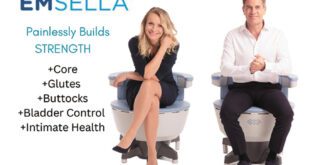By Bryan Carter, MPA-C, Phlebology-Surgery
 Painful, swollen legs, ankles and feet can be cause for alarm. Standing on your feet all day can cause a lot more than aches and pain. If your job or lifestyle requires you to stand for a majority of the day, your circulation will be affected; when this happens, you have a higher risk of venous insufficiency. Venous insufficiency is inadequate functioning of the vein valves in the leg, causing swelling, pain, varicose veins and skin issues.
Painful, swollen legs, ankles and feet can be cause for alarm. Standing on your feet all day can cause a lot more than aches and pain. If your job or lifestyle requires you to stand for a majority of the day, your circulation will be affected; when this happens, you have a higher risk of venous insufficiency. Venous insufficiency is inadequate functioning of the vein valves in the leg, causing swelling, pain, varicose veins and skin issues.
Various forms of venous issues affect 25 million Americans. Their legs are swollen, achy and they have a heavy sensation. When our veins are working correctly, they pump blood back to the heart. Valves in the veins are made to open and close in one direction if these valves or the wall of the veins are damaged, the blood is unable to work against gravity, and the result is a pooling of the blood in our legs. This pooling is called stasis and can present significant risks to our health. Varicose veins are one of the indicators of major damage to your circulatory system; venous symptoms should not be taken lightly. A medical professional will be able to report whether or not your symptoms are superficial, moderate or severely dangerous and in need treatment.
Stasis Dermatitis
A side effect of Venous Insufficiency is Stasis Dermatitis. This is a progressive sign of VI, where the skin of the lower legs, ankles and feet darkens from leaky veins. Skin inflammation in the lower legs caused by fluid buildup puts pressure on the veins and circulation issues, varicose veins, and ulcers cause the skin to darken. It also causes a thickening of the skin, dryness, flaking, sores and itching.
Stasis dermatitis causes the skin to be ultra-sensitive to even the smallest issues such as tiny abrasions and irritants like plants, cleaning products, soap, detergents and clothing. Very often dermatologists work directly with venous specialists to ensure their patients skin is cared for safely and treated to alleviate irritations.
Other Symptoms of Venous Insufficiency:
• Leg pain while standing or sitting, which subsides after resting for an extended period of time
• Sensations of tightness & burning may occur in the leg or foot
• Swelling of the calves, which dissipates after elevation
• Dark veins
• Varicose veins
• Dry, itchy skin
• Ulcer near the ankle (often painless, but with a dark rim)
Although it can happen to anyone, the most common factors that puts you at risk for vein issues is being a female over the age of 50, pregnancy, sitting for extended periods of time, a family history of varicose veins, smoking, being overweight, and a sedentary lifestyle.
Some people develop ulcerations, or sores on the lower legs and ankles, due to the low level of oxygen in the veins and the uptake of white blood cells. These ulcers can be extremely painful and are often quite resistant to healing.
Because the veins and arteries balance each other out, when a person experiences chronic symptoms, it’s critical to see a physician. If the veins are damaged, it’s not unusual that the arteries are not pumping blood efficiently either. Chronic venous insufficiency must be treated to prevent further damage to your circulatory system and your overall health.
Both chronic and acute symptoms could be a sign or lead to a DVT (deep vein thrombosis). DVTs are life-threatening and should be treated immediately. Deep vein thrombosis is a blood clot in the veins that are formed deep in within the legs. Vascular malformations, pelvic tumors or sitting for long periods of time are some of the risk factors that go along with DVTs. Speaking to your physician is vital if you or a loved one have any of the venous symptoms or risk factors discussed above.
Sometimes venous insufficiency is more of a cosmetic issue and poses little health concerns. This is usually noted in spider veins, which is when the tiny capillaries are damaged, but when the veins are damaged, this can cause varicose veins, which can lead to more severe health issues such as DVTs and cardiovascular disorders. Varicose veins and symptoms of venous insufficiency should never be taken lightly. A medical professional will be able to report whether or not your symptoms are superficial, or dangerous and in need treatment.
Treatment Options for Venous Insufficiency
• Compression Stockings
• Gradient Compression Devices
• Increased Exercise
• Medications
• Surgery (Usually through minimally invasive
catheters, or ultrasound)
Village Heart and Vein Center
At Village Heart & Vein Center, Bryan Carter specializes in venous issues and leg health, taking great pride in getting to know his patients on an individual level. He is supported by a full-service cardiology practice. Mr. Carter is a previous Army combat medic who obtained his Masters in Physician Assistant studies with a thesis in Venous Disease and Treatment. Mr. Carter has been treating vein problems since October 2002 and was one of the first Physician Assistants to perform thermal ablation—a treatment that soon made traditional vein stripping extinct. Bryan has personally trained physicians, physician assistants and nurse practitioners throughout Florida and Georgia and is an active member of the American College of Phlebology. He is also one of only a few to be inducted into the American Venous Forum.
To find out more, please visit their website at villageheartandvein.com, or call their office to schedule your appointment at, (352) 674-2080.
Village Heart and Vein Center
8575 NE 138th Lane
Lady Lake , FL 32159
(352)-674-2080
Toll Free: 1-855-432-7848 (Heart 4 U)
 Central Florida Health and Wellness Magazine Health and Wellness Articles of the Villages
Central Florida Health and Wellness Magazine Health and Wellness Articles of the Villages



